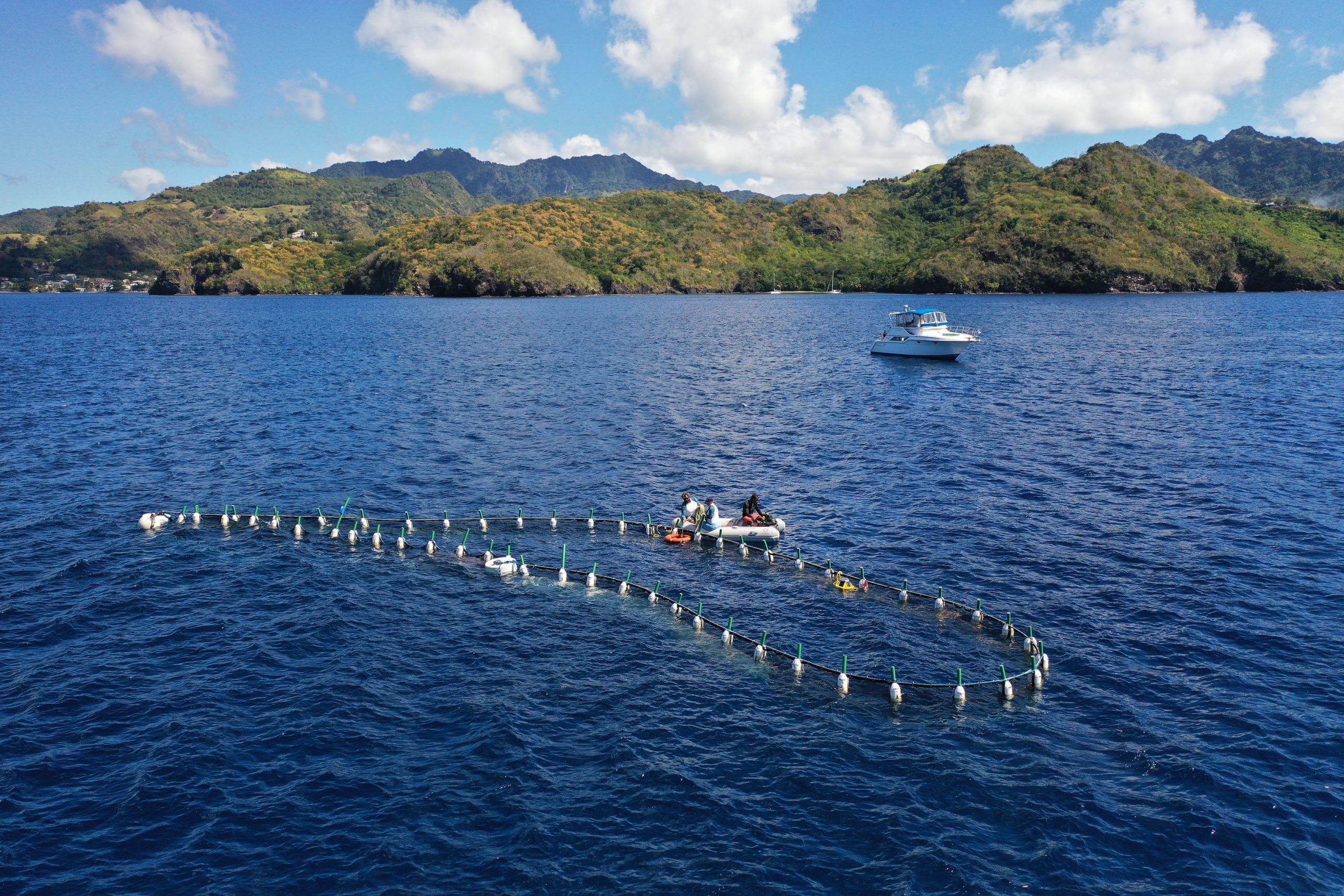
UK blue carbon aquaculture business awarded six figure project funding for UK ocean engineering trials
A carbon removal technology that aims to remove carbon from the atmosphere with the help of seaweed in the Atlantic Ocean has won a significant grant worth a quarter of a million pounds through Innovate UK.
UK firm Seafields hopes to use the grant in its efforts to overcome the extreme challenges involved in developing open-ocean aquafarming of Sargassum seaweed, chosen due to its seemingly unique ability to sequester and remove large amounts of carbon and as a potential alternative to fossil fuel.
The approach involves tracking, harvesting, baling and storing Sargassum, grown in aqua-farms in the South Atlantic Ocean Gyre. By baling and storing large quantities of the seaweed at over 4000 metres below sea level in the deep abyssal plain of the Atlantic Ocean, the company says it will trap physical atmospheric carbon away for thousands of years with minimal impacts to existing ecosystems.
The grant will go directly into upwelling pipe trials that will take place this year in the UK from possible sites in Northumberland or Devon. These trials will test the pipes that will distribute nutrients to their aquafarms to provide long-term safe and natural carbon sequestration in the ‘ocean deserts’ where there is very little ecological activity.
Seafields Co-Founder and CEO, John Auckland said: “The funding will be transformative for our business, by giving us the green light on critical trials such as testing our upwelling pipes that will help accelerate us further forward to achieve a gigatonne scale of carbon dioxide removals.”
“Our ultimate vision is to build a farm that is 0.02% of the planet’s surface, the size of Portugal, in the south Atlantic sub-tropical gyre, by 2032. As it’s a grant from Innovate UK, these trials need to be completed in the UK. Luckily, we have some of the best facilities in the UK to complete a trial like this, where we need an abundance of seawater close to some infrastructure we will purpose-build on land.”
Seafields says its approach both removes a lot of carbon from the atmosphere while also lessening our reliance on fossil fuels, providing seaweed-derived raw materials and feedstock to companies to make commercially viable products for the transport, plastic and cosmetics industries.
“In 2024, we aim to have built our first ‘catch and grow’ farms that will help alleviate the invasive Sargassum that is currently impacting communities in the Caribbean We plan to reduce the amount of Sargassum from beaching, through catching the seaweed further out to sea before it reaches land through barriers and then it turn into industrial feedstock and carbon credits, whilst providing job creation and employment opportunities to local communities.”






